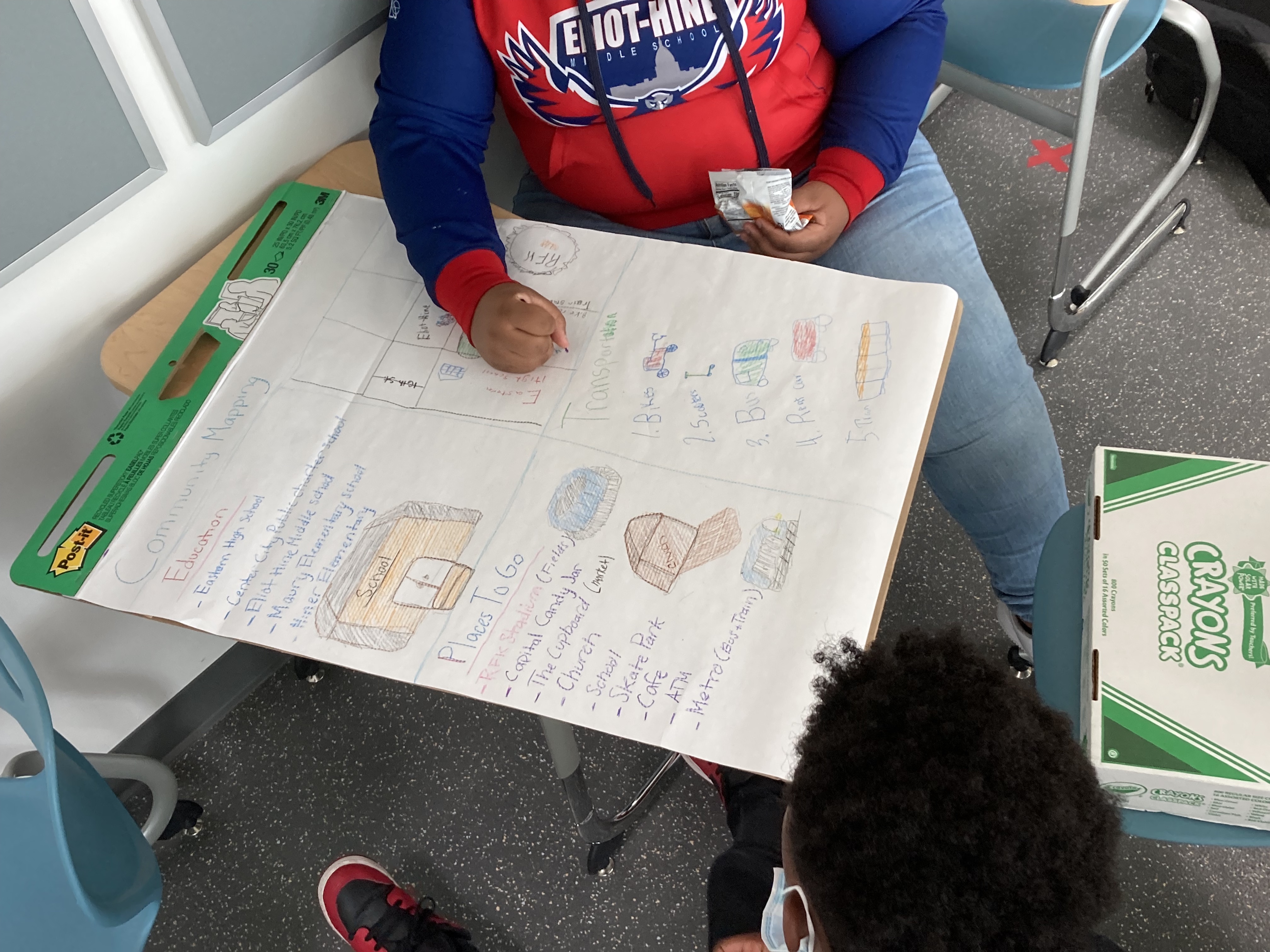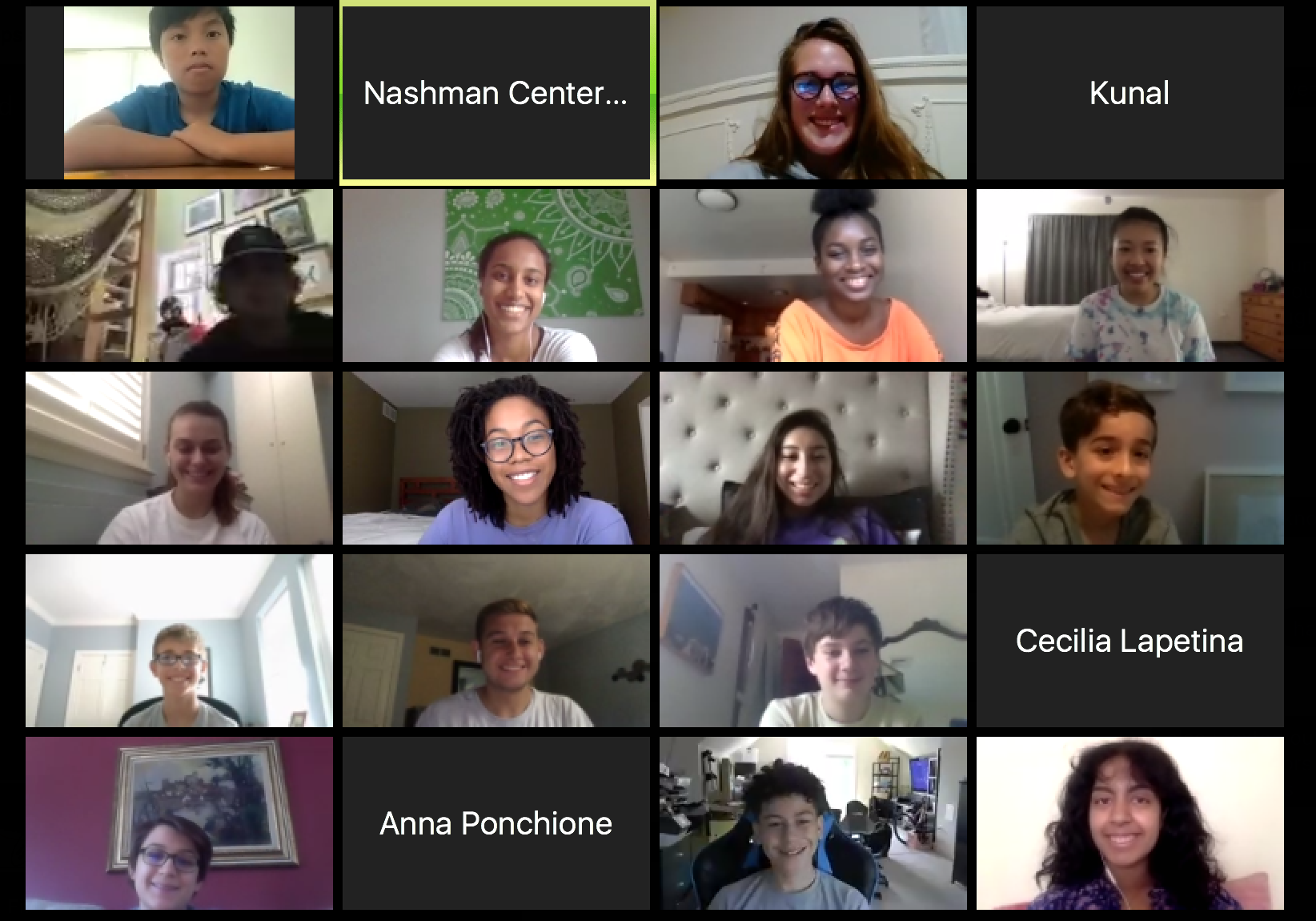Over a video call on a recent Friday afternoon, Washington, D.C., Mayor Muriel Bowser (D) faced some serious, critical questions. Did she have citywide plans for addressing climate change? What police alternatives was she implementing? Did she think gentrification in D.C. was an issue of race or of class?
The questioners had a stake in the answer, and they weren’t journalists. They were sixth, seventh and eighth-grade students from Eliot-Hine Middle School in Northeast D.C., participants in the SummerTrek Civic Changemakers program run by the George Washington University’s Honey W. Nashman Center for Civic Engagement and Public Service. For five weeks, 26 GW students partnered with K-12 schools across the city, working to help budding activists realize the power of their own voices on the issues that affect them and their communities.
“We strongly believe in our partnership with public schools in the District of Columbia, and part of our mission is to build active citizens and help develop a diverse democracy,” said Amy Cohen, director of the Nashman Center. “This program is an opportunity to work with K-12 students to develop their ability to make change and to understand how to make change within a democratic society—and while we’re doing it, it’s a perfect opportunity for GW students to develop their civic and democratic skills along with their teaching skills.”
At Eliot-Hine, students worked in groups on three content areas: climate change, gentrification and policing. Their extensive research included consultations with a parade of experts that included a park ranger, an urban ecologist, four sergeants from the Metropolitan Police Department and two GW professors. When the Eliot-Hine students discovered that constituents could request meetings with the mayor on her website, they filled out the form with the help of their GW facilitators and landed a face-to-face with Ms. Bowser as a result.

Mayor Bowser talks to Eliot-Hine students over Zoom. (William Atkins/GW Today)
Ms. Bowser gave straightforward answers to the students’ questions. The city is addressing climate change with “a landmark piece of legislation that has pretty significant emissions reduction goals,” she said: Municipal authorities are using solar and wind energy to power numerous government buildings, making solar power more affordable for D.C. residents and transitioning the city’s transport fleet of vehicles to electric.
“We in D.C., along with other major cities in America and in the world, have to be focused on how to address climate change,” she said. “So that is going to require all of us to think about how we travel, how we heat our homes and the energy that we use.”
On the issue of gentrification, Ms. Bowser gave a brief rundown of rent control and the problematic way markets can cause rents to skyrocket: “You guys will learn about the concept of supply and demand.” But with the help of the Housing Production Trust Fund, she said, the government can purchase or build units that sell for rates that don’t price residents out of their own neighborhoods.
As far as police violence, Ms. Bowser said, “What I’m worried about is street violence, because that’s what we’re encountering… We’re very focused on how do we move guns out of our communities, and how we get people who may be vulnerable to either getting involved in street crime or being the victims of street crime—how do we get them more resources.
“Your students have done fantastic projects, and they sent me some letters as well so I appreciate that,” the mayor told Nikki Vivekanandan, B.S. ’21, who spent her second summer as a volunteer teacher with the program this year.
Ms. Vivekanandan said she saw students’ level of engagement, and their understanding of their own power and agency, grow exponentially over the course of the program.
“Maybe at the beginning of the program they weren’t innately motivated to change the system,” she said. “By the end [of the program], we had kids writing letters to the mayor about their own communities’ experiences with gentrification.
“For them to be able to hear from the mayor herself that she has read their letters and she has them in her hand—I think that is definitely something that will stick with them forever and make them feel like their voices are being heard.”



